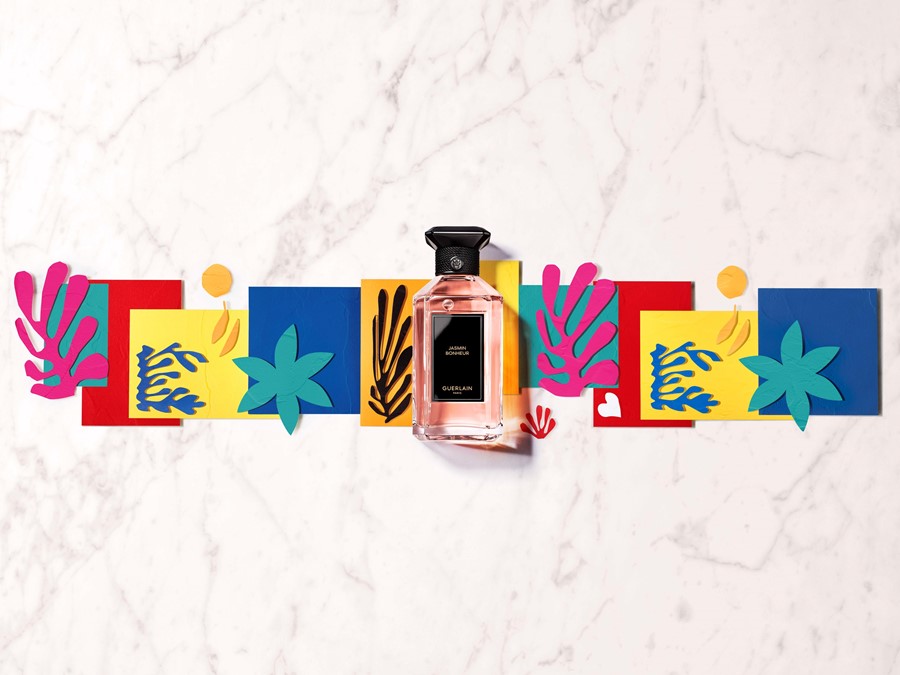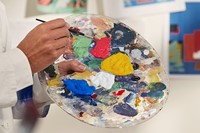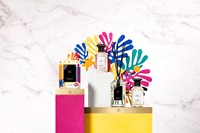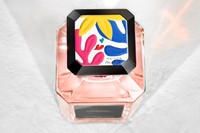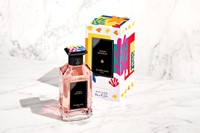“It’s about joy and colour and light”: Jasmin Bonheur is the latest fragrance from the luxury French perfumer, inspired by the sensual pleasures of the legendary painter
What would it actually be like to live inside a Matisse painting? If you’re feeling stressed, it’s a soothing thought experiment. Think about the easy joy of his weightless, cavorting nudes in La Danse (1910), his playful cut-out work, or the bright, thrumming colour of his Fauvist landscapes. The artist has long been linked to happiness, and for good reason – in his creations, we see flashes of flowers, sex, plants and music, as well as an abundance of other sensual pleasures. “Find joy in the sky, in the trees, in the flowers,” the artist once said, reflecting on his outlook in later life. “There are flowers everywhere for those who want to see them.”
For their latest creation, Guerlain decided to take this experiment a step further, bringing scent into the equation. What would these euphoric worlds – with their vivid, sculpted colours and rich sensory delights – smell like? The result is Jasmin Bonheur, a new fragrance from the brand, and the latest in their L’Art & La Matière collection. The experiment led them to blend bright florals (Jasmine, iris and rose), with rich fruits (apricot), and an earthy, sensual chypre. “[It’s all about] light and contrast,” says Thierry Wasser, Guerlain’s master perfumer. “That’s how you get Matisse into a bottle.”
“My great-grandfather’s works are very multi-sensory, his was a world full of plants and flowers and they became recurring motifs in his work” – Jean-Matthieu Matisse
It’s not as simple as it sounds. Trying to encapsulate the essence of an artist – especially one who went through many different phases, over multiple decades – requires an intense amount of thought and care. In Guerlain’s Paris office, in a small laboratory overlooking the city’s rooftops, director of perfume creation Delphine Jelk spent over a year labouring over the project, alongside her team. “I had a very precise idea of what I wanted,” she says, showing me the space and carefully pulling out the distilled essence of each individual ingredient. As the name of Jasmin Bonheur suggests, the star is Jasmine, and there are three different types included – Calabria (zesty), Grasse (powdery) and India (smokey) – with all of them extracted at a specific moment of bloom (a second too late, and the fragrance becomes “animalic” – overripe and almost faecal). The other star ingredient of Jasmin Bonheur is the chypre; a warm, woody blend of oakmoss, patchouli and vetiver. “There are many chypres in perfumes,” explains Jelk. “It’s like a fur coat, very chic but very warm and sensual, and maybe quite dark.” But here, to stick with the “happiness” theme, the idea was to rebalance the blend, making a chypre that was “very bright”.
Guerlain has been making fragrances since it was founded in 1828, and the brand has always prided itself on its “close relationship” with art. Founder Pierre-Francis-Pascal Guerlain was a passionate collector, commissioning artists to use his stores as a canvas, and buying pieces from Monet, Manet and Pissaro even when they were derided by the wider public. The L’Art & La Matière project takes this relationship even further, with Guerlain releasing luxurious, meticulously crafted perfumes that are each inspired by individual artists, cultural artefacts, or art movements. Jasmin Bonheur looks to Matisse, but there’s also Neroli Autrenoir, which pays tribute to the dark brushstrokes of Pierre Soulages; Rose Cherie, inspired by Édith Piaf’s La Vie En Rose, or Cruel Gardenia, which brings to life Charles Baudelaire’s “dangerously sweet” Flowers Of Evil, to name just a few.
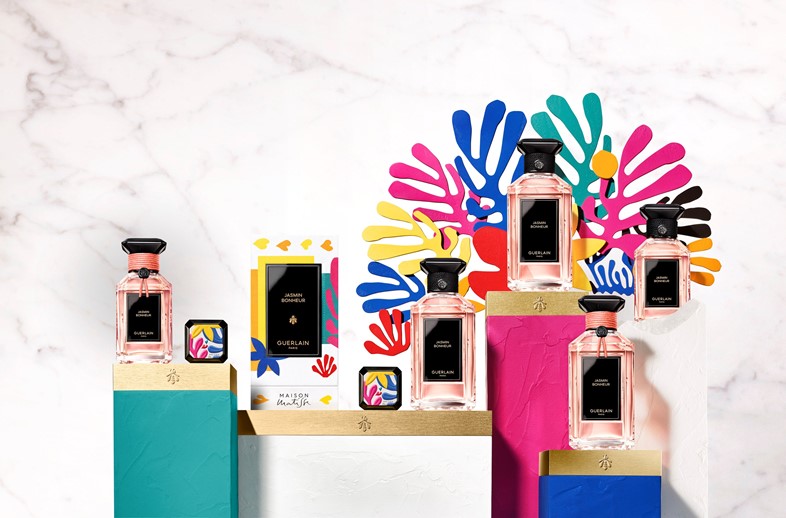
Each project is equally ambitious, and this time around, Guerlain teamed up with Jean-Matthieu Matisse – the founder of Maison Matisse and the artist’s great-grandson – to ensure that the project was as authentic as possible. “My great-grandfather’s works are very multi-sensory, his was a world full of plants and flowers and they became recurring motifs in his work,” he said in a statement, “[so] there are a lot of coherent connections between his work and the artistry of Guerlain perfume.” Jasmin Bonheur is also joined by an equally uplifting, complementary scented candle, Figue Azur.
For Wasser, the collaboration felt like a natural, fated step – the perfect partnership between a French cultural icon and a French institution, both obsessive about craftsmanship and creation in their own ways. “I had a huge double book about Henri Matisse, a beautiful coffee table book,” Wasser recalls, fondly. “You see how close the language of this artist is to us, how bold, how modern it was. He draws and captivates attention.” Those qualities, he adds, are what made the challenge so irresistible. “[Jasmin Bonheur] is about joy and colour and light. You can use the same description for Matisse.”
Jasmin Bonheur, a collaboration between Guerlain and Maison Matisse, is available now.
